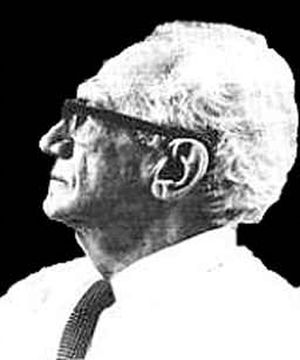Letter from Prof. Valentine Bargmann and Lloyd Motz
On the Recent Discoveries Concerning Jupiter and Venus is a letter published in Science magazine (December 21 , 1962, Vol. 138, pp. 1350-52) from Princeton University Prof. Valentine Bargmann and Columbia University astronomer Lloyd Motz concerning two of Velikovsky‘s predictions, one on radio noises from Jupiter, the other on the heat of Venus.
The letter appears in full on the Science magazine web site here, and is reproduced below:
On the Discoveries Concerning Jupiter and Venus
In the light of recent discoveries of radio waves from Jupiter and of the high surface temperature of Venus, we think it proper and just to make the following statement.
On 14 October 1953, Immanuel Velikovsky, addressing the Forum of the Graduate College of Princeton University in a lecture entitled “Worlds in Collision in the Light of Recent Finds in Archaeology, Geology and Astronomy: Refuted or Verified?,” concluded the lecture as follows: “The planet Jupiter is cold, yet its gases are in motion. It appears probable to me that it sends out radio noises as do the sun and the stars. I suggest that this be investigated.”
Soon after that date, the text of the lecture was deposited with each of us [it is printed as supplement to Velikovsky’s Earth in Upheaval (Doubleday, 1955)]. Eight months later, in June 1954, Velikovsky, in a letter, requested Albert Einstein to use his influence to have Jupiter surveyed for radio emission. The letter, with Einstein’s marginal notes commenting on this proposal, is before us. Ten more months passed, and on 5 April 1955 B. F. Burke and K. L. Franklin of the Carnegie Institution announced the chance detection of strong radio signals emanating from Jupiter. They recorded the signals for several weeks before they correctly identified the source.
This discovery came as something of a surprise because radio astronomers had never expected a body as cold as Jupiter to emit radio waves (1).
In 1960 V. Radhakrishnah of India and J. A. Roberts of Australia, working at California Institute of Technology, established the existence of a radiation belt encompassing Jupiter “giving 1014 times as much radio energy as the Van Allen belts around the earth.”
On 5 December 1956, through the kind services of H. H. Hess, chairman of the department of geology of Princeton University, Velikovsky submitted a memorandum to the U. S. National Committee for the (planned) IGY in which he suggested the existence of a terrestrial magnetosphere reaching the moon. Receipt of the memorandum was acknowledged by E. O. Hulburt for the Committee. The magnetosphere was discovered in 1958 by Van Allen.
In the last chapter of his Worlds in Collision (1950), Velikovsky stated that the surface of Venus must be very hot, even though in 1950 the temperature of the cloud surface of Venus was known to be -25°C on the day and night sides alike.
In 1954 N. A. Kozyrev (2) observed an emission spectrum from the night side of Venus but ascribed it to discharges in the upper layers of its atmosphere. He calculated that the temperature of the surface of Venus must be +30 C; somewhat higher values were found earlier by Adel and Herzberg. As late as 1959, V. A. Firsoff arrived at a figure of +17.5°C for the mean surface temperature of Venus, only a little above the mean annual temperature of the earth (+14.2°C) (3).
However, by 1961 it became known that the surface temperature of Venus is “almost 600 degrees K” (4). F. D. Drake described this discovery as “a surprise … in a field in which the fewest surprises were expected.” “We would have expected a temperature only greater than that of the earth … Sources of internal heating radioactivity will not produce an enhanced surface temperature. Cornell H. Mayer writes (5), “All the observations are consistent with a temperature of almost 600 degrees,” and admits that “the temperature is much higher than anyone would have predicted.”
Although we disagree with Velikovsky’s theories, we feel impelled to make this statement to establish Velikovsky’s priority of prediction of these two points and to urge, in view of these prognostications, that his other conclusions be objectively re-examined.
Department of Physics,
Princeton University,
Princeton, New Jersey
Department of Astronomy,
Columbia University, New York
References
- See also the New York Times for 28 October 1962.
- N. A. Kozyrev, Izv. Krymsk. Astrofiz. Observ. 12 (1954).
- Science News 1959, 52 (Summer 1959).
- Phys. Today 14, No. 4,10 (1961).
- C. H. Mayer, Sci. Am. 204 (May 1961).
